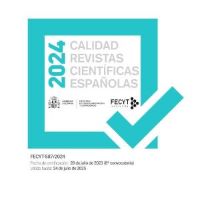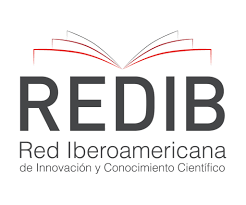THE DOCTRINE OF THE JUSTIFICATION OF SAINT THOMAS DE VILLANUEVA AND ITS RELATIONSHIPS WITH THE TEACHING OF TRENTO
DOI:
https://doi.org/10.51743/cih.72Keywords:
Saint Thomas of Villanueva, Trento council, Archbishop of ValenciaAbstract
In this study we open a confrontation of the thought of Santo Tomás de Villanueva on justification with the dogmatic teaching of the Council of Trent in the corresponding decree. It is obvious that this is a substantial question in the Christian faith, which not without reason Luther considered articulus stantis vel cadentis Ecclesiae, and on the other hand the Tridentine Decree is a truly masterpiece, for all of which the comparison of the document with the preaching of the holy Archbishop of Valencia supposes submitting it to a quality test of the highest rigor. In the study it will be observed that the teaching of Sto. Thomas not only does not give in theological quality to the definitions of Trent, they are extremely consistent with them and in several cases he anticipates them with great precision. In the end, it will be possible to observe the intellectual and spiritual height of the preaching of the Saint as an excellent teacher and educator of the faith of the Church.
Downloads
Global Statistics ℹ️
|
450
Views
|
300
Downloads
|
|
750
Total
|
|
References
L. Manrique, I. Álvarez, J. M. Guirau, edición crítica con traducción española de las Obras Completas de Sto. Tomás, 10 volúmenes (vol. VIII en dos tomos), BAC, Madrid 1910-1915.
A. Cañizares Llovera, Santo Tomás de Villanueva. Testigo de la predicación española del siglo XVI, Madrid 1973, 116-119.
J. W. O’Malley, Trento. ¿Qué pasó en el Concilio?, Santander 2015, 107.
J.L. Ruiz de la Peña, El don de Dios. Antropología teológica especial, Santander 1991, 303.
H. Jedín, Historia del Concilio de Trento, II, Pamplona 1972, 191-358.
J. Mª Rovira Belloso, Trento. Una interpretación teológica, Barcelona 1979, 163.
P. Fransen, “Desarrollo histórico de la doctrina de la gracia”; en Mysterium Salutis IV/2, Madrid 1975, 687-688.
J. I. González Faus, Proyecto de hermano. Visión creyente del hombre, Santander 1987, 504.
J. L. Ruiz de la Peña, El don de Dios. Antropología teológica especial, Santander 1991, 298-299.
D. Gutiérrez, Historia de la Orden de San Agustín, II: Los agustinos desde el protestantismo hasta la restauración católica 1518- 1648, Roma 1971, 158.
Downloads
Published
How to Cite
Issue
Section
License
The Fundación Universitaria Española publishing house preserves the patrimonial rights (copyright) of published works, and encourages and allows their reuse. The works are published in the electronic edition of the journal under a license “Creative Commons Atribución/Reconocimiento-NoComercial 4.0 Licencia Pública Internacional — CC BY-NC 4.0”, and can be copied, used, disseminated, transmitted and publicly exhibited, provided that : a) the authorship and original source of its publication is cited (journal, publisher and URL of the work); b) are not used for commercial purposes; c) the existence and specifications of this license of use are mentioned.
The author / s partially transfer the property rights (copyright) of this work to the Fundación Universitaria Española (Spain) (NIF: G28433670), for the printed and online editions.
It also declares to have respected the ethical principles of research and to be free from any conflict of interest.
«C.I.H.» encourages the authors and the scientific community to the maximum promotion and dissemination of the works in their final version through:
1) Your list of contacts (emails) and social networks (Facebook, Twitter, LinkedIn ...).
2) Institutional repository of your University and public repositories (Mendeley, Cosis ...).
3) Scientific social networks (ResearchGate, Academia.edu, Kudos ...).
4) Personal or institutional website, blog, etc.
5) Google Scholar, ORCID, ResearchID, ScopusID, Dimensions, PlumX ...
6) Printed copies purchased directly and sent to specialists for reading and subsequent citation if appropriate.
For the nomination of future articles by authors of "C.I.H.", the impact of previous works will be taken into account, so that those with citation higher than the annual average of the journal will be preferred.












2.jpg)
















1.png)
1.png)

1.png)


.png)
.png)

.png)
1.png)
1.png)
